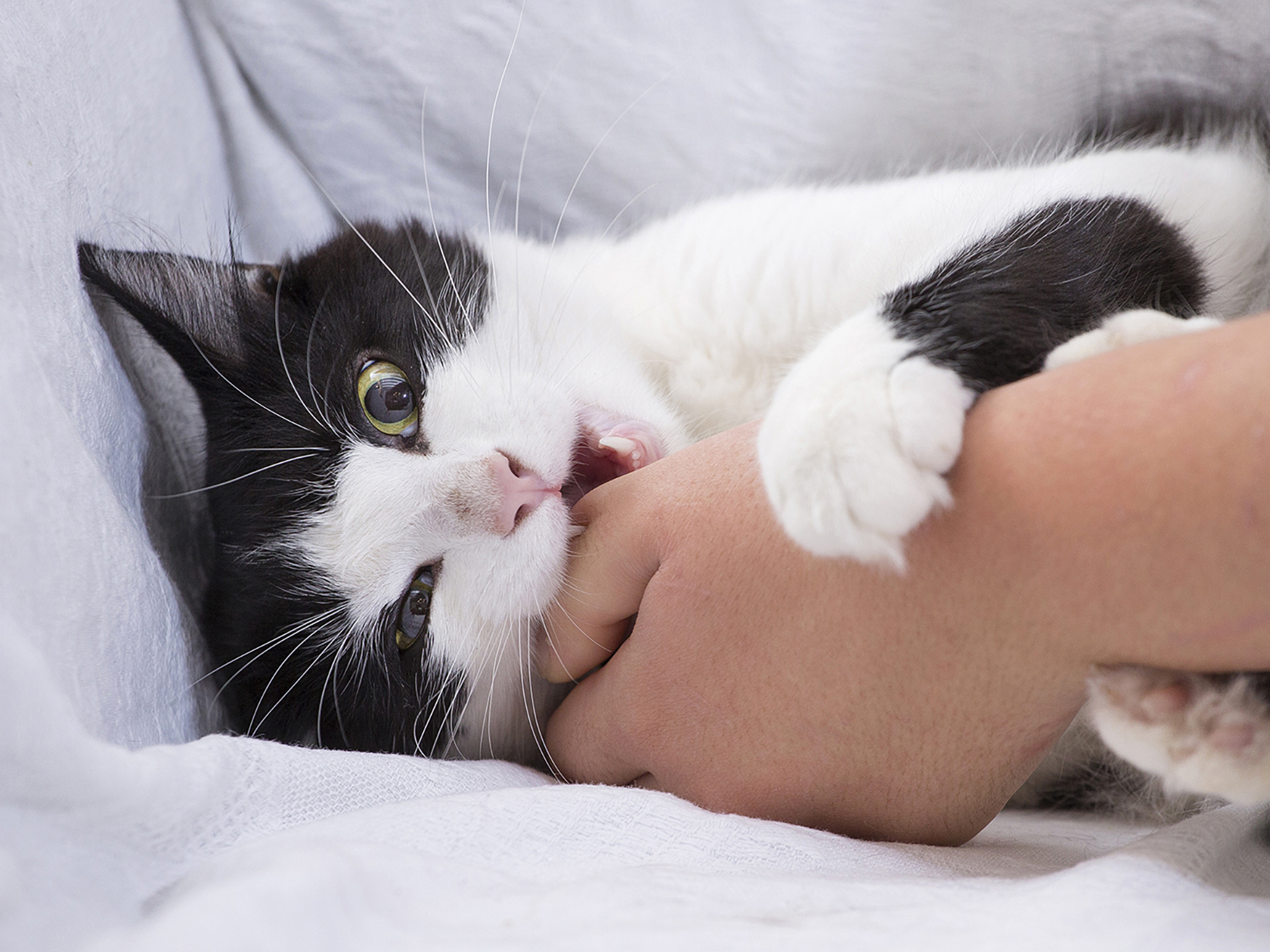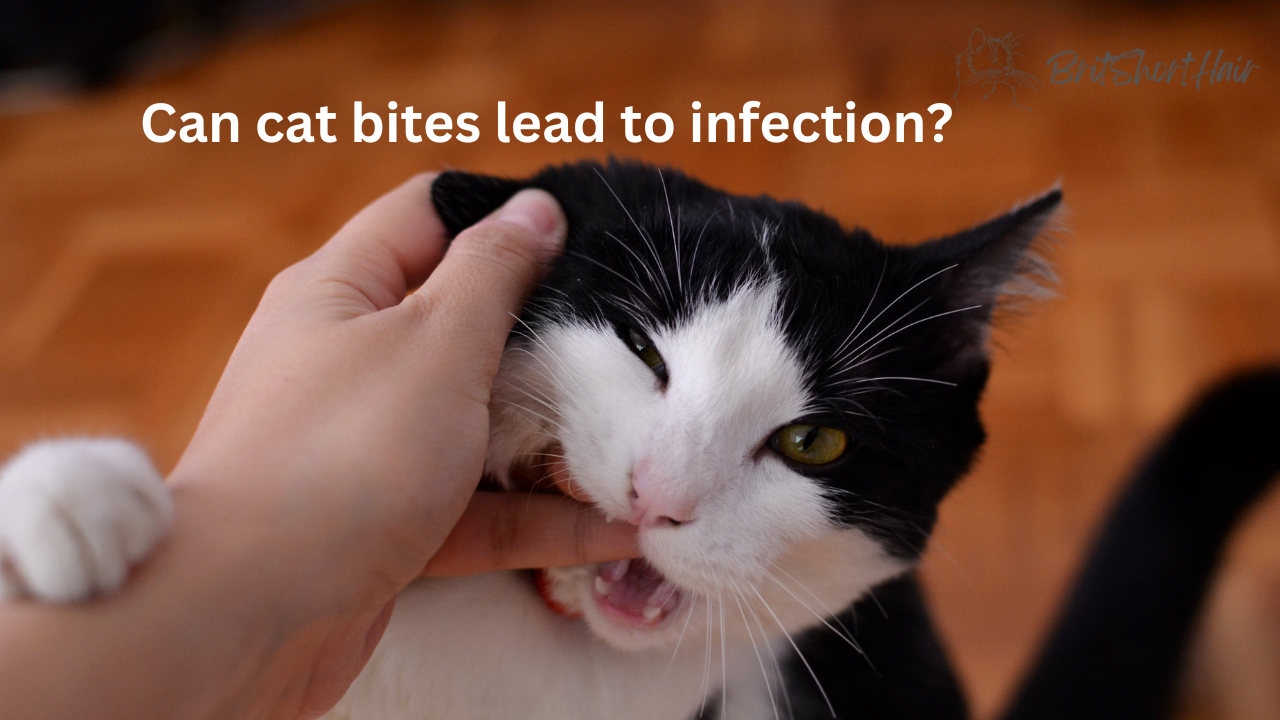
Cats have made their way into our hearts as cherished pets who offer us comfort and fantastic company when we talk about our furry pals at home. However, there is a side to them that may not be immediately apparent: the potential damage of cat bites.
Cat bites, while appearing to be harmless on the surface, can really induce infections and other problems that we are often unaware of. In this post, we’ll look at cat bites as sources of illnesses from several perspectives, as well as the reasons why these bites might lead to difficulties and what we can do to prevent and address these situations as effectively as possible.
The Microbial Minefield: Cat Bites as Breeding Grounds for Infections
When your cat scratches you, it may not appear to be a big deal, but it contains a hidden risk: the possibility of harmful bacteria entering your body. Cats have a variety of microorganisms in their jaws, and when their bite breaches your skin, these bacteria can enter and create difficulties. Pasteurella multocida is a hard character to keep an eye out for. It’s a bacterium that lives in the mouth of cats and is a common source of diseases induced by cat bites.
In your body, it begins rapidly replicating and generating characteristic indicators of infection such as redness, swelling, and severe discomfort. But that’s not the only cause for concern; other bacteria, such as Staphylococcus and Streptococcus species, can be found on a cat’s skin and mucous membranes. If these go in through a bite, things can quickly spiral out of control if you don’t take adequate care of them.
Amplifying the Risk: Factors Contributing to Complications from Cat Bites
Penetration Depth
Cats, you know, have these pointed fangs that are actually built for hunting. When they bite, they can make tiny holes in the skin that are deeper than we imagine. And those holes end up being ideal entry places for germs to enter and cause illnesses. It complicates problems because the infections are now deeper and more difficult to treat.
Delayed Medical Attention
People frequently fail to recognize the gravity of the situation when a cat has bitten them. They may regard them as superficial wounds that do not require a great deal of medical treatment. However, this misperception might result in a delay in seeking medical treatment, which provides an opportunity for infections to take hold and begin spreading. As more time passes, the likelihood of there being difficulties increases to a higher degree.
Vulnerable Demographics
Cat bites pose a serious risk to individuals whose immune systems are not functioning as they should because these individuals are more susceptible to infections. These bites have the potential to cause incidents and eventually cause diseases throughout the body. In addition, if your immune system is already compromised in any way, the results can be much worse.
Cat Bite Infections and Their Consequences: Complex Complications Revealed
Emergence of Cellulitis
When infections from cat bites are ignored, they can actually turn into a condition called cellulitis. It makes your skin all red, swollen, and really sore, and it even feels warm to the touch. If you don’t get it treated on time, this cellulitis can start spreading and affecting bigger areas of your body.
The Specter of Abscesses
When our body tries to fight off infections from cat bites, it sometimes ends up creating these things called abscesses. They’re like little pockets filled with yucky pus, all surrounded by swollen and irritated tissue. To deal with abscesses, you usually need to get them drained and take antibiotics to make sure things get better properly.
The Dreaded Septicemia
Things can get rather serious if the diseases that result from cat bites are not treated in a timely manner. These infections can, in extremely unusual circumstances, actually move into circulation, which is a very serious matter. It can result in inflammation throughout the body, and if it is not treated as soon as it is seen, it has the potential to develop into a life-threatening condition.
Safeguarding Against the Threat: Preventive Measures and Effective Management
Cultivating Vigilance: Recognizing Feline Signals
Cats are good at using body language to show how they feel and set their limits. You can tell a lot from things like big pupils, hissing, growling, ears lying flat, and a tail that’s all riled up. If you pay attention to these signals, you can avoid situations that might tick off a cat and make it defensive, reducing the chances of getting bitten. This approach isn’t just about preventing injuries – it also helps in building a better connection with your furry friend, one that’s based on trust and understanding.
Immediate Wound Cleansing: Thwarting Infection at the Onset
If you ever find yourself dealing with a cat bite – and I hope you don’t – remember that cleaning the wound ASAP is super important. Even if it looks small, those little punctures can let bacteria sneak in under your skin and cause trouble later. The best thing to do right away is to wash the wound with soap and water. It helps get rid of any dirt, stuff that might be in there, and bacteria hanging around on the surface.
You can also put on things like hydrogen peroxide or iodine, which are like antiseptic helpers that make sure there are even fewer bad germs. Doing this from the get-go sets the stage for stopping those harmful bacteria from making themselves at home and causing an infection.
Seeking Medical Aid: Professional Assessment and Intervention
No matter how bad the cat bite looks, it’s really important to get medical help. The experts know what to do. They’ll check out the wound carefully, looking at how deep it goes, whether there’s any stuff that got in, and even your medical history. Depending on all this, they might give you antibiotics to stop any bad bacteria from causing trouble. This way, you’re getting ahead of the game and stopping infections from happening. It’s a smart move that helps avoid things getting worse.
Diligent Follow-Up: Nurturing Healing and Monitoring
Following the doctor’s recommendations is critical once you’ve contacted them. Even if you start feeling better, make sure you take the medicines exactly as prescribed. It ensures that any remaining bacteria are thoroughly eradicated. Remember to keep a close check on the wound as well. If it becomes redder, more painful, or swollen, or you detect pus pouring out, it could indicate that the infection is still there or worsening. If you notice anything similar, don’t hesitate to notify your doctor. Taking care of the healing process and dealing with any snags as soon as they arise is the best way to avoid complications.
Conclusion
In conclusion, When it comes to dealing with cat bite infections, being proactive is the name of the game. If you pay attention to how your cat’s feeling, clean any bites right away, get help from a doctor, and then make sure you’re keeping up with what they say, you’re on the right track.
When you mix responsible pet care with knowing what to do, you can really lower the chances of infections and all the tricky stuff that can follow. It doesn’t just keep everyone healthy – it also helps make sure that you and your furry buddy have a great relationship built on understanding and harmony.
Hey we have a lot of information on cats you can check out by clicking Bristhorthair.com
Discover the fascinating mystery behind feline in our article, “Why Is My Cat Coughing?” Explore the myths, science, and cultural tales surrounding this age-old question.

